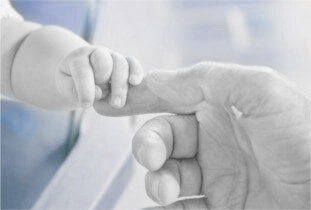Devices To Help Those With Cerebral Palsy

Cerebral Palsy (CP) is the most common motor disability in children. CP is caused by abnormal brain development that affects a child’s ability to control their muscles for mobility, vision, and speech. While there is no cure for the condition, there are medical devices specifically made for those suffering from CP that can be life-changing for them, and for those who love them.
Types of Cerebral Palsy
There are generally 4 types of Cerebral Palsy:
- Spastic Cerebral Palsy – this is the most common type of CP (80% of CP patients). Children with spastic CP have stiff muscles, making their movements awkward. This muscle stiffness can occur in their legs and/or arms.
- Dyskinetic Cerebral Palsy – this affects children’s movement of their hands, arms, feet, and legs, making it difficult to sit and walk. Their movements are uncontrollable. Sometimes the face and tongue are also affected, making sucking, swallowing, and talking difficult.
- Ataxic Cerebral Palsy – this affects children’s balance and coordination, causing them to be unsteady when walking. It also can make controlled movements such as writing or reaching for something difficult.
- Mixed Cerebral Palsy – some children have symptoms of more than one type of CP. The most common type of mixed CP is spastic-dyskinetic CP.
Devices to Assist Children With Cerebral Palsy
Devices are available in various shapes and sizes to ensure that every child with CP is able to receive the assistance they need as they transition into adulthood.
Traditional Devices
Treatment plans often include the use of devices to assist with walking, sitting, vision, hearing, and speech. The devices listed below promote independence, learning, and assistance with daily living.
- Orthotics-Orthotics help to compensate for muscle imbalance and increase independent mobility.
- Braces and splints use external force to correct muscle abnormalities and improve function such as sitting or walking.
- Mobility aids – wheelchairs, rolling walkers, and powered scooters can help individuals who are not independently mobile.
- Vision/Hearing – glasses, magnifiers, and large-print books/computer typefaces assist with vision. Some individuals with CP may need surgery to correct vision problems. Hearing aids and telephone amplifiers may help people hear more clearly.
- Writing and Typing – writing and typing aids may be used to help an individual with CP communicate through written content. Special pencils with grips allow for easier movement and minimize hand fatigue. Handcuffs or clips can assist with holding utensils.
- Electronic Communication Boards – these are tools that allow children to choose letters, words, and phrases on a screen to express their thoughts and emotions verbally. The selected words or symbols are generated into sentences that are read aloud for others.
- High-tech boards — this includes speech generation and eye-tracking technology to assist children with limited mobility in arms, hands, or fingers.
- Low-tech boards — a basic sheet of paper that allows children to point to letters or words to display what they want to communicate.
- Eye-Tracking Devices – individuals with cerebral palsy may have difficulty moving their arms, wrists, hands, or fingers. This can make selecting images or symbols on a communication board difficult. Eye-tracking technology eliminates the need to actually push a button or use a pointer.
These communication devices can be either dedicated devices or used on mainstream generic tablets with special apps or programs.
New Devices Through Technology
Exciting technological advances continue to benefit those with Cerebral Palsy. Below are examples of high tech innovations that can impact future generations living with CP.
- 3D Printing of Orthotics: 3D printing allows the creation of orthotics with different thicknesses in different areas. With this advance in technology, custom-made orthotics can be made in 24 hours for a fraction of the cost of traditional orthotics. Also, due to the highly precise, custom fit, the devices are comfortable to wear, without the skin irritation caused by traditional custom orthotics.
- The Robotic Crawler: researchers at the University of Oklahoma built a machine that can help babies – two months to eight months old – who are at risk for Cerebral Palsy learn to crawl by aiding in their development of motor and cognitive skills. Through mounted cameras and an EEG cap, the machine can interpret data in real time that a baby sends by trying to crawl, offering robotic assistance when and where needed.
- The Eye Gaze: the Eye Gaze is an oversized hands-free tablet device that allows someone to communicate, perform tasks, and more just by using their eyes. The Eye Gaze is so exciting because it can offer a form of independence to users by utilizing its wide-ranging programs designed for anything from completing school assignments, turning on the television, and saying “I love you.” An invisible laser scans the user’s eyes to detect where she’s looking – nothing is attached or connected to her body. To ‘press’ a key presented on the screen, the user simply looks at it for a predetermined amount of time.
- Brain Imaging Cap: this is no ordinary cap. This cap allows research participants a more accessible, less stressful way to give important brain activity data to researchers. The conventional method of brain imaging is to hold still in an MRI scanner for a period of time, which is very difficult for babies. Doctors can image a baby’s brain without needing an MRI with this new cap. It also means researchers can study the infant brain in any environment, even at home! It can be put on easily while sitting down, walking, or even performing tasks in real time to record task-specific brain activity.
- Wheelchair Improvements: wheelchairs can now be moved with just a switch of a button, making it easy for children with cerebral palsy to move around with minimal problems. There are various types of electronic wheelchairs including standing wheelchairs. Standing wheelchairs allow children to increase their balance and coordination while still offering them an efficient way to move around. A standing wheelchair allows children to interact with their peers on an eye-to-eye level. Standing wheelchairs have also been shown to improve circulation and promote good urinary and bowel health.
Science and technology have added more potential for improved experiences to the lives of those with Cerebral Palsy. These advances in technology are improving the lives of those living with CP, and those who love them. The Eisen Law Firm stays abreast of advances in cerebral palsy assistive devises so that we can include them in your life care plan. If your child was injured at birth, call our Birth Injury Attorneys at (216) 687-0900 or contact us online to learn more.




